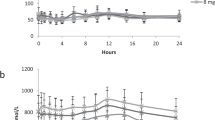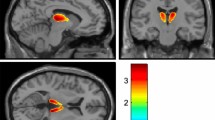Abstract
THE chemotherapeutic administration of massive doses of L-3,4-dihydroxyphenylalanine (L-dopa) with or without peripheral decarboxylase inhibitors to parkinsonian patients can lead to aberrant metabolism which may influence the efficacy of the regime. It is generally agreed that the transformations can include spontaneous chemical reactions facilitated by the inherent reactivity of the catechol nucleus. For example, Sandler et al.1 reported the excretion of tetrahydroisoquinoline alkaloids (TIQs), tetrahydropapaveroline (norlaudanosoline) and salsolinol by parkinsonian patients who had consumed large doses of L-dopa and ethanol. The same two TIQs have been detected in brain and urine of mammals administered alcohol and a second compound—for example, L-dopa or pyrogallol; and it has been proposed that these Pictet–Spengler condensation products (of dopamine and dopaldehyde or acetaldehyde, respectively) may be responsible for addiction in alcoholism2–5. We report here the occurrence of a new class of TIQs, norlaudan-osolinecarboxylic acids (NLCAs), in the urine of parkinsonian patients on L-dopa with or without carbidopa. Comparative studies with rats on a similar regimen reveal the presence of NLCAs in brain as well as in urine.
This is a preview of subscription content, access via your institution
Access options
Subscribe to this journal
Receive 51 print issues and online access
$199.00 per year
only $3.90 per issue
Buy this article
- Purchase on Springer Link
- Instant access to full article PDF
Prices may be subject to local taxes which are calculated during checkout
Similar content being viewed by others
References
Sandler, M., Carter, S. B., Hunter, K. R. & Stern, G. M. Nature 241, 439–443 (1973).
Davis, V. E. & Walsh, M. J. Science 167, 1005–1007 (1970).
Cohen, G. & Collins, M. Science 167, 1749–1751 (1970).
Cohen, G. Biochem. Pharmac. 25, 1123–1128 (1976).
Myers, R. D. & Melchior, C. L. Science 196, 554–556 (1977).
Wilson, M. L. & Coscia, C. J. J. Am. chem. Soc. 97, 431–432 (1975).
Battersby, A. R., Jones, R. C. F. & Kazlauskas, R. Tetrahedron Lett. 1873–1876 (1975).
Watson, E., Wilk, S. & Roboz, J. Analyt. Biochem. 59, 441–451 (1974).
Landsberg, L., Berardino, M. B & Silva, P. Biochem. Pharmac. 24, 1167–1174 (1975).
Sourkes, T. L. Nature 229, 413–414 (1971).
Hornykiewicz, O. Fedn Proc. 32, 183–190 (1973).
Dougan, D., Wade, D. & Mearrick, P. Nature 254, 70–72 (1975).
Author information
Authors and Affiliations
Rights and permissions
About this article
Cite this article
COSCIA, C., BURKE, W., JAMROZ, G. et al. Occurrence of a new class of tetrahydroisoquinoline alkaloids in L-dopa-treated parkinsonian patients. Nature 269, 617–619 (1977). https://doi.org/10.1038/269617a0
Received:
Accepted:
Published:
Issue Date:
DOI: https://doi.org/10.1038/269617a0
This article is cited by
-
Dopamine-derived alkaloids in alcoholism and in Parkinson's and Huntington's diseases
Journal of Neural Transmission (1988)
-
In vivo formation of histamine phosphopyridoxal cyclic compounds
Agents and Actions (1981)
-
Chronic L-DOPA treatment of mice: A behavioural and biochemical study
Journal of Neural Transmission (1981)
-
Subacute l-DOPA in mice: Biochemical and behavioural effects
Psychopharmacology (1980)
Comments
By submitting a comment you agree to abide by our Terms and Community Guidelines. If you find something abusive or that does not comply with our terms or guidelines please flag it as inappropriate.



